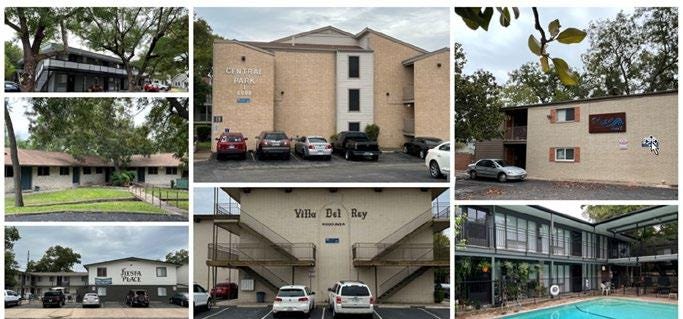I saw this comment online this week:
After the 2024 elections, I anticipate housing will become a frequent topic in the news cycle—as it should. The United States is short between 4 and 7 million housing units, depending on the estimate, and this shortage is the single biggest crisis facing every major metropolitan area. The lack of affordable housing drives economic inequality, reduces workforce mobility, and exacerbates social tensions. It’s no wonder that housing affordability has become a flashpoint in American politics.
This urgency was reflected in the 2024 election results, where metro areas across the country shifted decisively away from Democrats toward Republicans. I believe housing affordability played a significant role in this shift. Rent hikes, soaring home prices, and housing shortages have created widespread dissatisfaction, and voters are demanding action (as we’ve said before-rent and mortgage-equivalents are 30% of the index that causes inflation).
While we do not yet know what a Trump administration will do on housing policy, we have some clues. Doug Burgum, former Governor of North Dakota, is expected to be Trump’s nominee for Secretary of the Interior. As governor, Burgum showed strong YIMBY (Yes In My Backyard) credentials by advocating for zoning reforms and streamlining development processes to increase housing supply. The Department of the Interior oversees critical tools like historic tax credits, which could play a significant role in preserving and expanding housing in urban areas. If Burgum brings his pro-housing policies to the federal level, it could signal a shift toward addressing housing scarcity more aggressively.
Ponce City Market in Atlanta, one of many historic tax credit successes
The Misleading Narrative of “Pushing Out”
One of my closest friends (who is pro YIMBY and housing!) said that the problem with this narrative is that it “creates an image of a tech bro stiffarming an abuelita.” “Pushing out” is an emotional shorthand for displacement that complex issue. The idea that individuals moving into a neighborhood are actively displacing existing residents assumes a direct causality that doesn’t actually exist in real life.
Displacement is real and deeply concerning, but its root causes are systemic, not personal. Research consistently shows that new construction, even at higher price points, helps stabilize or reduce rents in existing housing stock.
Blaming newcomers creates a false dichotomy of villains and victims, distracting from the real forces at work.
Blueprint investment Bishop Ridge, led by Dallas partner Savoy Equity, combines rehabilitating abandoned low-quality housing (Swope and Mangold building) with new construction in vacant lots (Parker, Bowie). The effort consists of these three properties that will create 260 rental units in total, all affordable at <100% area median income. The project will plant 200+ trees and create 730 jobs.
Housing Scarcity: The Real Villain
The United States faces a massive housing shortage. According to a 2022 report by Freddie Mac, the U.S. has a housing shortfall of 3.8 million units, with demand outstripping supply in nearly every major metropolitan area. (2) This scarcity drives up prices, making it harder for low- and middle-income families to afford housing.
In high-demand cities, restrictive zoning laws exacerbate the problem. Nearly 75% of residential land in the U.S. is zoned exclusively for single-family homes, limiting the construction of duplexes, apartments, and other higher-density housing options. (3) When housing supply is constrained, affluent buyers and renters compete for existing homes, driving up prices and displacing lower-income residents.
Here’s where the concept of “naturally affordable housing” becomes critical. Naturally affordable housing refers to older, modestly priced homes or apartments that remain affordable without subsidies. These units often serve as the last line of defense for low-income households. However, when new housing isn’t built to meet demand, wealthier households begin purchasing these naturally affordable units, renovating or demolishing them, and effectively removing them from the affordable housing stock. (4)
The Role of New Construction
Critics of new development often argue that building market-rate or luxury housing exacerbates displacement. However, this perspective overlooks the broader dynamics of supply and demand. Studies consistently show that adding housing at all price points helps stabilize rents and reduces displacement pressures.
Blueprint investment Continental (San Antonio) combines historic tax credits and Opportunity Zone benefits to build ~400 workforce-affordable units.
If cities block new housing—particularly luxury housing—affluent households don’t disappear. Instead, they buy existing homes, often those that were previously affordable, and renovate or rebuild them. This dynamic accelerates the loss of naturally affordable housing, leaving lower-income residents with fewer options.
A 2019 study from the University of Minnesota found that adding new market-rate housing reduced displacement pressures in surrounding neighborhoods by relieving demand for older, more affordable units. Similarly, a 2021 report by the UCLA Luskin School of Public Affairs revealed that neighborhoods with higher rates of new construction experienced slower rent growth compared to those with little or no development. Research from the Urban Displacement Project at UC Berkeley further underscores that increasing housing supply—at all price points—reduces competition for existing housing, easing upward pressure on rents. Finally, a 2022 study from the National Bureau of Economic Research highlighted that new luxury housing indirectly benefits lower-income residents by reducing spillover demand for mid- and lower-tier units, demonstrating how a broad increase in supply helps the entire housing ecosystem.
These findings reinforce that building more housing is essential to tackling affordability and displacement issues.
Solutions to Displacement and Scarcity
To address housing challenges effectively, we need systemic solutions that preserve affordability, protect vulnerable residents, and increase overall housing supply.
1. Preserving Naturally Affordable Housing
One of the most promising approaches is the creation of housing conservancies, which acquire and preserve naturally affordable housing. The Austin Housing Conservancy Fund is a prime example. This fund purchases older apartment complexes, keeping rents affordable for middle- and lower-income residents while maintaining the character of local neighborhoods, while helping existing homeowners stay in their homes (increasing home equity value as property values rise—which is a good thing!).
Stabilized and renovated properties from the Austin Conservancy Fund
All of Blueprint Local’s housing investments in Austin have made a contribution to this fund, demonstrating how private-sector initiatives can play a role in preserving affordability. By investing in funds like these, developers can mitigate displacement while still building new housing to meet demand. (5)
2. Building More Housing at All Levels
The most straightforward solution to housing scarcity is to build more housing—period. This includes not only subsidized affordable housing but also market-rate and luxury housing. Each new unit helps relieve pressure on existing housing stock, reducing competition and stabilizing prices.
In cities like Houston, which has relatively lax zoning regulations, housing supply has kept pace with demand, resulting in more affordable rents compared to other major metros like San Francisco or New York. Upzoning and relaxing height restrictions in high-demand areas could replicate this success in other cities.
3. Community Land Trusts
Community land trusts (CLTs) acquire and manage land for long-term affordability. Residents purchase homes on the land but lease the property itself from the trust, keeping costs lower and preventing speculative resale. CLTs have proven effective in cities like Burlington, Vermont, where the Champlain Housing Trust has preserved over 2,000 affordable homes. And our former colleague at Blueprint, Kavya Shankar, has co-founded Trust Neighborhoods to help scale this model.
Why Words Matter in Housing
How politicians and journalists talk about housing plays a critical role in shaping public perceptions and policy debates around housing. When reporters perpetuate narratives like “newcomers are pushing out long-time residents,” they obscure the real issues and hinder efforts to find solutions. A more accurate approach would focus on the structural drivers of displacement, such as restrictive zoning, housing scarcity, and speculative investment.
Headlines like “Zoning and Scarcity, Not Newcomers, Drive Displacement” or “How We Can Preserve Affordability in High-Demand Cities” may not be as sensational, but they’re far more illuminating—and resonate with what people are actually experiencing. The housing crisis is one of the most pressing challenges of our time, affecting millions of Americans and shaping the future of our cities.
To address this crisis, we need to move beyond reductive narratives and focus on systemic solutions that increase housing supply, preserve affordability, and protect vulnerable residents. By shifting the conversation away from “tech bros pushing out abuelitas” and toward the systemic drivers of displacement, we can build a more inclusive, equitable housing market. City and state leaders need to recognize that people believe there’s a problem, and speak directly and honestly about solving it. Journalism has a vital role to play in this shift, and it’s time for reporters to rise to the challenge.
The next time you read a headline blaming newcomers for displacement, remember: it’s not the individuals moving into a neighborhood who are at fault. It’s decades of bad policy, housing scarcity, and a lack of political will. Let’s focus on the real culprits—and the real solutions.
References
Urban Displacement Project, UC Berkeley: Studies on displacement and housing scarcity.
Freddie Mac, 2022: U.S. housing shortage estimates.
UCLA Luskin School of Public Affairs, 2021: Effects of new housing on rent stabilization.
University of Minnesota, 2019: Impact of luxury developments on displacement.
Austin Housing Conservancy Fund: Model for preserving naturally affordable housing.
Champlain Housing Trust: Successful community land trust example.









Thanks. I see housing with new eyes now.